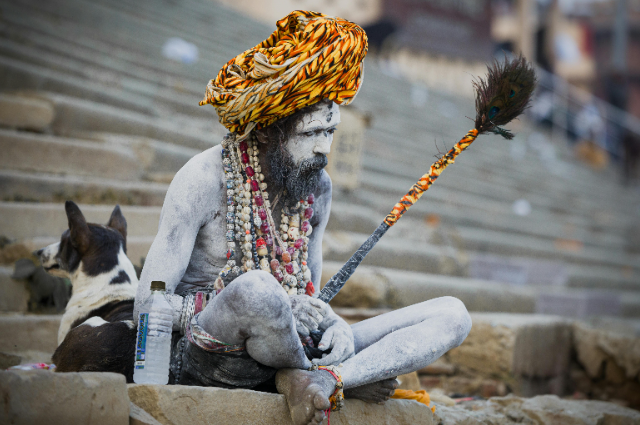
Lord Shiva, seen as Mahadeva, in reference to the God of destruction, implies destruction in the transformative sense, the absorption of death in the soil. The Aghori see Lord Shiva inside of everyone.
The formal proceeding of the Aghori sect is believed to have surfaced through the systematic practices of Baba Kinaram, who is considered the founder of the Aghori in modern tradition. The Aghori immerse them in the understanding of Advaita where everything is seen as one. It strays from expectations of society that consider distinctions of what norms dictate everyday life. Aghora is that which is beyond what is viewed as terrible.
The Times Now wrote about the Aghori Sadhus “that appear only during the Kumbh Mela.” To achieve the acceptance of oneness and eradicate the distinctions made between that which is pure and impure. The detachment from norms and the practices adopted that are viewed as taboo as well as fascination from the general public include, minimal clothes, rituals undertaken on cremation grounds and bodies of the dead, the consumption of alcohol and meat as holy men, but in bowls fashioned from skulls, and finally, post-mortem cannibalism. Their presence at Maha Kumbh attracts attention and allows those that indulge in this religious gathering to ponder on the continuity of religion and its practices and the ignorance that comes with not asking enough questions. The Aghori delve deep in their beliefs and do not hesitate in imparting their knowledge.
“Another thing about their presence at Maha Kumbh is the fact that Aghoris remind people to look beyond appearances. In a way they force one to think that deep down at core level we are all part of the same divine creation and we are all equal despite our different ways of leading our life.”
The open ceremonies of the burning of bodies near the purifying holy Ganga River is said to attract this sect of Shaivite Sadhus or ascetics known as the Aghoris. The documentary visits the old city of Varanasi to reach this Hindu monastic order. In this pilgrimage to meet the “holy men of the cremation grounds”, a local that stayed near the burning ghats, Gunni, spoke of the Aghori. “Aghori believe for god Kali, and they have a special power, Aghori, they eat bodies as well”. When asked why they eat human bodies, Gunni answered, “to get energy”. Gunni was the first to speak about the Aghori during this pilgrimage to Varanasi. Baba Keenaram, the Aghori said to have started the Aghori tradition as mentioned above. His body is buried in a tomb at Baba Keenaram Sthal, in Ravindrapuri, Varanasi.
The crew spoke to an Aghori Baba that they spotted, “this ash we Aghoris use is to decorate ourselves. We cover ourselves in ash and from this our Lord Shiva comes to us.”
“Whatever good we are working for, he blesses us so our wishes are fulfilled,” the Aghori Baba said as he decorated Dakota’s face with ash stored within a skull.
When they met Kashi Baba, he spoke of the Manikarnika ghat which was made by Lord Shiva. “Aghori season, they come here, do meditation, and they take the flesh of the body, eat it, and walk away”.
Joël Gugler (photojournalist) had written about the Aghori and referred to them as Cannibal Monks.
Despite their intentions and principles, those that are not of this sect view them with curiosity and treat the Aghori as an alienated sect whose practices takes precedence, which they cannot fathom, and hence fear is instilled in its place.
“Their temple, situated at Manikarnika Ghat, may seem foreboding to outsiders. Decorated with real skulls and centred on esoteric rituals, it embodies the sect’s rejection of worldly fear. Yet, within its walls, I found a community bound by kindness and mutual respect”.
